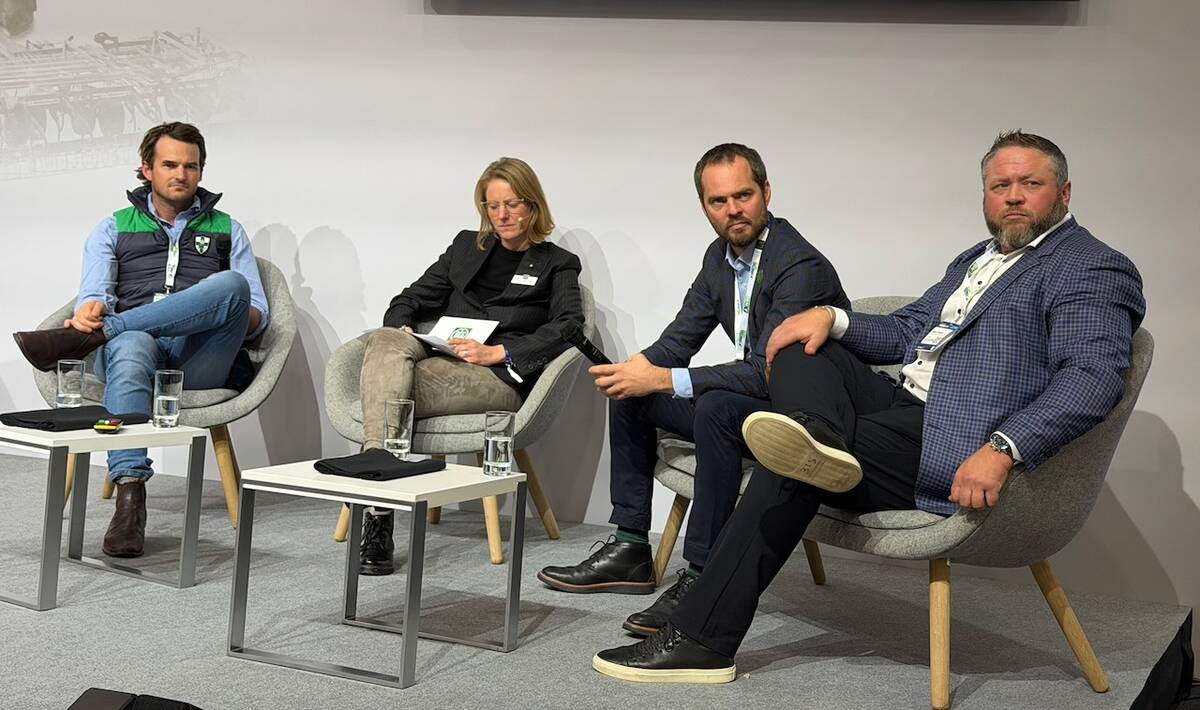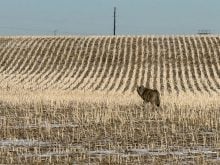Farmers may not be crowding through the doors to get into Canadian Wheat Board election candidate meetings, but they are voting in greater numbers than four years ago.
A series of candidate forums in mid-November attracted disappointing crowds, with attendance figures generally in the teens.
But that apparent lack of interest isn’t reflected in the number of completed ballots mailed to the election co-ordinator.
As of Nov. 19, a total of 8,609 completed ballots had been received by Meyers Norris Penny, representing 18.5 percent of the 46,577 ballots distributed to eligible voters in Districts 4, 6, 8 and 10.
Read Also

Agritechnica Day 2: The future of tractor power, building quicker crop apps and large farms and tech
Agritechnica Day 2: The future of tractor power, building quicker crop apps with Syngenta and large farms and tech
In 2000, the last time an election was held in those even-numbered districts, the number of ballots returned at the same point in the election totalled 11.2 percent of eligible voters.
However, the response is trailing behind the 2002 election in the odd-numbered districts, when 23 percent of eligible ballots had been returned by this date.
The highest return rate so far has been in District 4, with 22 percent of ballots mailed in by Nov. 19. In that district, CWB chair Ken Ritter is running against Rick Strankman and Tom Jackson.
In the other districts, the return rate so far is 18.7 percent in District 6, 17.2 percent in District 8 and 14.6 percent in District 10.
Election co-ordinator Peter Eckersley said that based on the returns so far, he expects the final voter turnout will be similar to previous elections.
“We seem to be on track for a turnout in the 37-42 percent range,” he said, adding that is a “cautious” estimate.
The turnout was 43 percent in 1998, 41 percent in 2000 and 43 percent in 2002.
While that may seem like a low number, independent political analysts say that a turnout of 40 percent is fairly typical in a mail-in election.
Meanwhile, the co-ordinator is still assessing the low attendance at the eight candidate forums (two in each district).
Average attendance was 25, ranging from a low of seven at Prince Albert (District 6) to a high of about 100 at Weyburn (District 8).
“There is no question we’re disappointed and astonished at some of the totals, and we’re not sure why the numbers were so low,” he said.
Some possible explanations being put forward include the late harvest, the locations, the timing and the amount of advertising.
The exact cost of the meetings has not yet been calculated, and when it is, that information will be provided to the CWB.
This marked the first time the election co-ordinator sponsored candidate meetings, and at least one candidate hopes it will be the last.
“This wasn’t a good expenditure,” said Rod Flaman, seeking re-election in District 8. “I would recommend we discontinue this going forward.”
He said the election co-ordinator and the board should take a hands-off approach to the election, letting local groups organize candidate meetings if they want them, and not worrying about the turnout.
“If it got down to 20 percent (voting) then we should question the process, but 40-50 percent is pretty good and we should just leave it at that,” he said.














